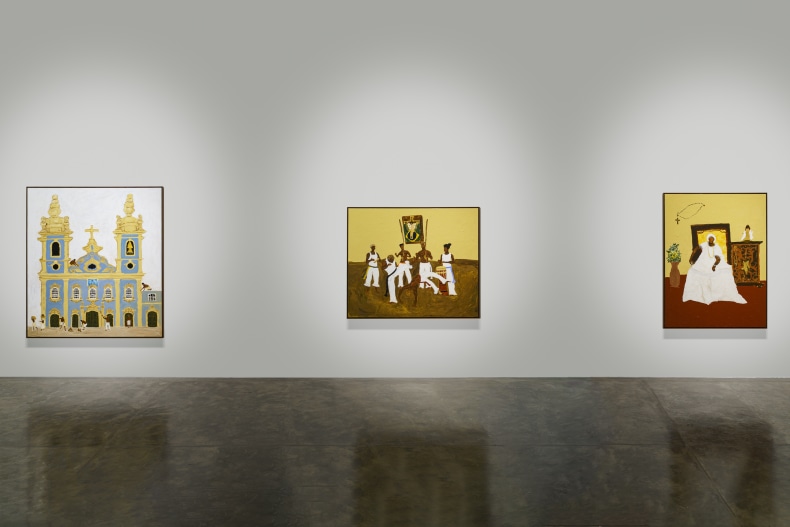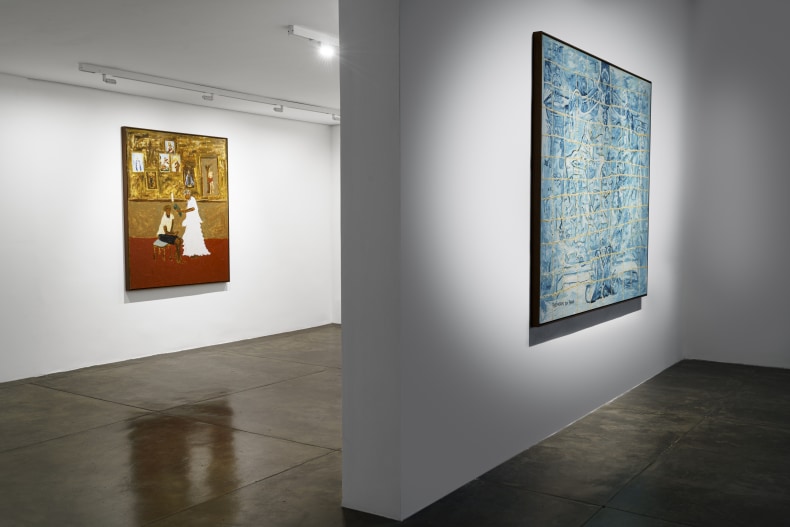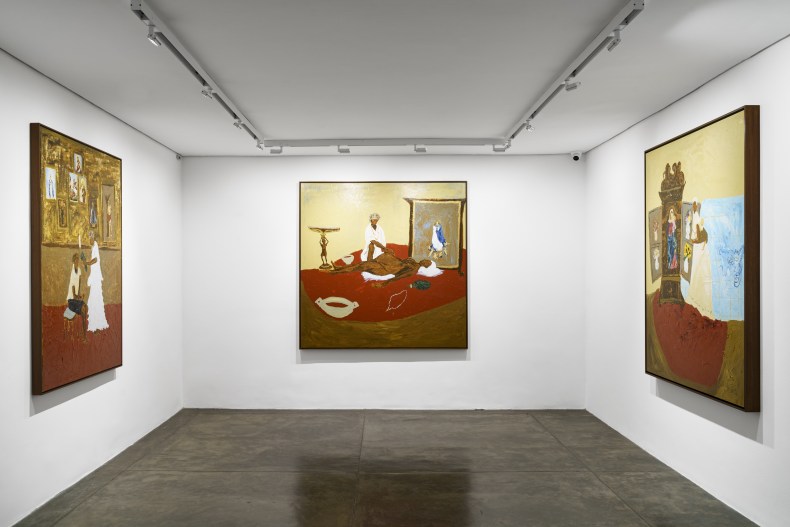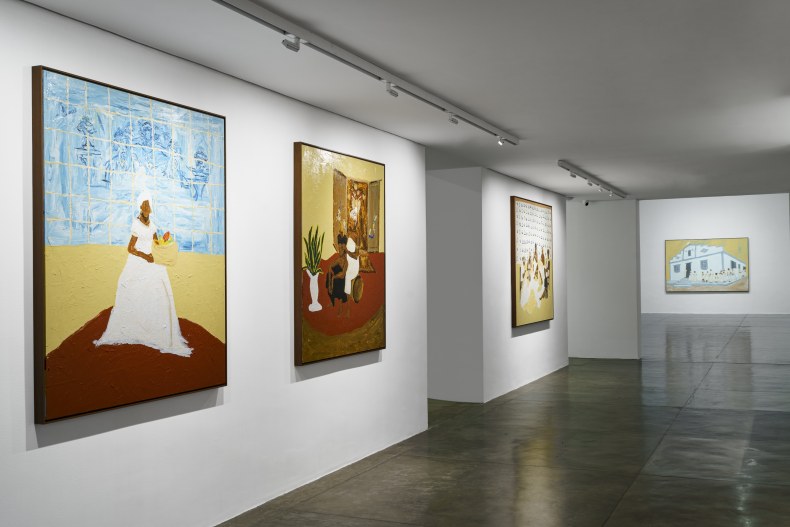Nara Roesler São Paulo is pleased to announce Pessoas que eram coisas que eram pessoas, the first solo show by artist Elian Almeida in the city. Accompanied by essays by Keyna Eleison and Luiz Antônio Simas, the exhibition presents a series of new works, the result of Almeida's deepening research on Afro-Brazilian culture and memory. In these new works, the artist focuses on the cultural manifestations of the Recôncavo Baiano. The exhibition opens to the public on May 13th and runs until July 29, 2023.
The theme of displacement in Almeida's work manifests in two different ways: temporally and spatially. “I was born twice in the same place”, the artist often says. The place he refers to is the region of Cais do Valongo, in Rio de Janeiro, one of the main points for the arrival and subsequent commercialization of those who were enslaved in Brazil during the 19th century. For Almeida, this birth is twofold, as the arrival of his ancestors, in this same port centuries before, imported as ‘things’ and not ‘people’, is a historical reality that determined his birth in this same place, in the year of 1994.
This statement reveals just how much Almeida's practice seeks to intertwine different time periods and narratives into his own biography. However, his sensitive approach allows his works to go beyond the biographical and encompass the experiences of other racialized bodies in Brazil.
The artist, who has already produced paintings based on the movement of Africans abducted from their homeland in order to be enslaved in the New World, now turns his attention to diasporas within Brazilian territory. In particular, the diaspora of the Bahian population in Rio de Janeiro. Almeida sees in this migration the origins of a cultural encounter that would encourage expressions of resistance in Afro-diasporic culture, especially in the territory known as Little Africa, in Rio de Janeiro.
The guiding thread of the artist’s research that unfolds in these works is the religiosity manifested through syncretic practices. The Recôncavo Baiano, the name given to the geographic region around the Baía de Todos os Santos, in Bahia, and whose map appears in one of the paintings in the exhibition, is a territory rich in African cultural traditions, due to the immense number of individuals who arrived in Brazil from the continent.
In this context, secret brotherhoods of enslaved people flourished, such as the ‘Brotherhood of Good Death’ and the ‘Brotherhood of Black Men.’ Although, at first, these communities were sheltered within the Catholic church, the brotherhoods became meeting and socializing spaces for people who shared experiences of exile and forced submission.
Almeida's paintings aim to highlight how elements of Catholicism were deliberately integrated by the enslaved population to ensure the survival of their own subordinated religious and cultural practices. On his canvases, the artist articulates images and actions from the two religious universes, and in most of the compositions, whiteness is represented through oratories, sculptures and furniture and even through architectural elements, such as the typical Portuguese tiles. The elements of Afro-Brazilian culture, particularly those that founded Umbanda and Candomblé, appear in the liveliness of specific actions and ritual elements, such as the spiritual guides or through dances and herbs, creating counterpoints between the material and spiritual spheres.
The artist also presents a series of canvases of ritual scenes, such as the washing of the Bonfim staircase, or scenes of dances and rhythms dedicated to the orixás (gods). One of the highlights of the exhibition is the painting in which the artist mentions the law of the free womb, a theme that he has previously explored in other works.
Promulgated in 1871, the law stated, from that moment on, freedom to the children of enslaved women. In the painting, a black woman, about to give birth, is represented lying on the floor of a colonial townhouse, accompanied by a mourner. For Almeida, this work represents the power of renewal present in the act of being born, serving as a metaphor for the transformational possibilities of the future.
However, for Almeida, erasure is the greatest form of ongoing violence, which he seeks to point out in his work. The artist targets not only the denial of the right to memory as a result of colonialism but also the gaps in the personal memories of people of color, due to the violence and traumas to which they are subjected by society.
In Pessoas que eram coisas que eram pessoas, Almeida brings together symbols and images from extensive iconographic research to create syncretic compositions that transcend time in order to propose a new mythical imagery. This is not because the artist wants to call back to some heroic time, but rather because he is attempting to retrace possible origins of Afro-Brazilian culture, demonstrating how the dispute of narratives can even take place through the proposition of new forms of representation.

![Elian Almeida Irmandade de Nossa Senhora do Rosário dos Homens Pretos , 2023 [detalhe]](https://artlogic-res.cloudinary.com/w_790,h_700,c_limit,f_auto,fl_lossy/ws-nararoesler/usr/exhibitions/images/exhibitions/237/gnr04165_high.jpg)
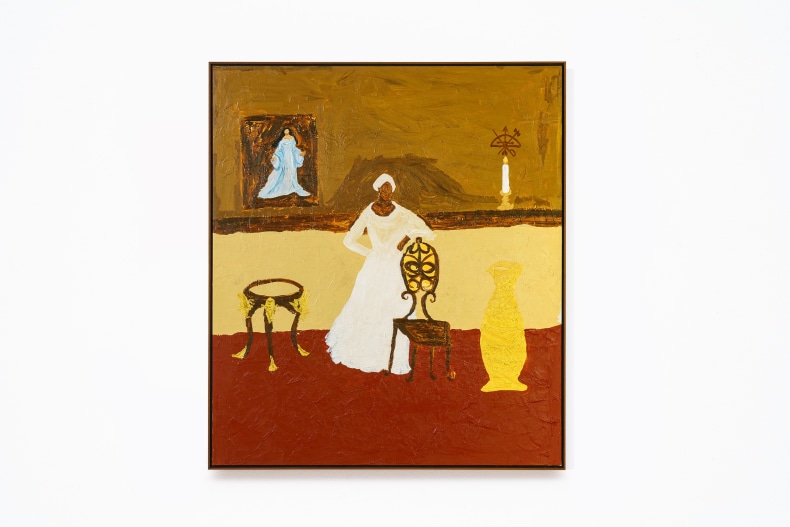
![Elian Almeida Maria Júlia da Conceição Nazareth, 2023 [detalhe]](https://artlogic-res.cloudinary.com/w_790,h_700,c_limit,f_auto,fl_lossy/ws-nararoesler/usr/exhibitions/images/exhibitions/237/gnr04123-1_high.jpg)
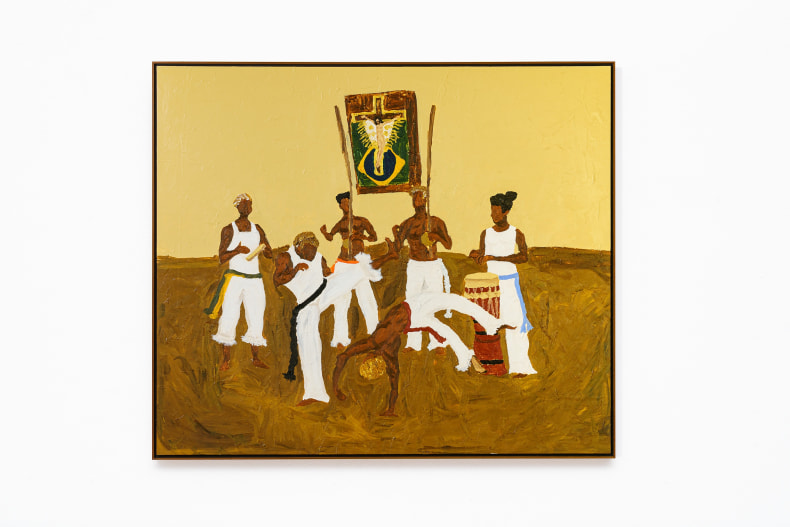
![Elian Almeida Senhor do Bonfim, 2023 [detalhe]](https://artlogic-res.cloudinary.com/w_790,h_700,c_limit,f_auto,fl_lossy/ws-nararoesler/usr/exhibitions/images/exhibitions/237/gnr04141_high.jpg)
